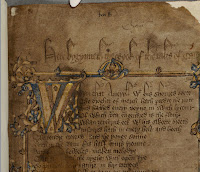

It became fossilized and degraded, because after the fourteenth century, most of those using the language did not fully understand it. A form of French, known as 'Law French', continued to be used by English lawyers in written form until the seventeenth century. , in French with Latin headings (WLC/LM/8, f.203v)Īlthough French remained familiar to Gower’s contemporaries at court and in educated or wealthy circles, the great days of Anglo-Norman as a literary medium were over. Gower’s great English work was known by its Latin title Confessio Amantis and included Latin running titles and section headings.ĭetail from John Gower, Traitié. This followed a familiar convention of bilingual presentation. The introduction to the passage is in Latin, and reads 'Gower, qui Anglicus est, sua verba Gallica … excusat' ('Gower, who is English, makes excuse for his French words'). Shown here is a section headed by an introduction (rubricated in red ink) in which Gower apologises for any mistakes in his French. His ballades include the French poem Traitié pour les amantz marietz, promoting the virtues of married love. John Gower, a contemporary and friend of Geoffrey Chaucer in the late fourteenth century, wrote in all three languages. These languages were used by particular communities and for specific purposes.

In contrast, Latin was only understood by those who learnt it at school, and French by those who attended court. His explanation concludes that everybody, both the educated (‘lered’) and unschooled (‘lewed’), old and young, can understand the English tongue. Who have frequented the court and lived in it.īut educated and uneducated, old and young, 1v-2rīut I’ll speak English, that people use most,īoth among the educated and the uneducated. The author of the Speculum Vitae ( The Mirror of Life), writing late in the fourteenth century, chose to use English and explained why.ĭetail from Speculum Vitae, WLC/LM/9, ff.

See the words ‘This’ ('Þ is') at the start of line 2, and ‘begat’ ('byȝat') in the middle of line 3.įragment of the Life of St Bridget, in English (WLC/LM/38) He leaves a wide gap between the first capital letter of each line and the rest of the word. The scribe uses the Anglo-Saxon letters ‘yogh’ for ‘y’ or ‘g’ (ȝ) and thorn for ‘th’ (þ). The earliest literary document in English in the University of Nottingham’s collections is a fragment from the life of St Bridget, from the South English Legendary, composed in the late thirteenth century. For Robert the appropriate language for lay education was French, but by the late fourteenth century his book had been translated into English.ĭetail from Robert of Gretham, Mirur, in Anglo-Norman (WLC/LM/4, f.57v) It was still dominant in the mid-thirteenth century when Robert of Gretham wrote his advice on moral conduct, the Mirur. Hebrew and Aramaic were used by the medieval Jewish community in England.Īnglo-Norman had emerged as a distinct dialect of French after the Norman Conquest in 1066 established a French-speaking aristocracy in English. Eventually English emerged as the standard literary medium, but it was not until the eighteenth century that Latin disappeared from legal documents.

Authors made choices about which one to use, and often used more than one language in the same document. Three main languages were in use in England in the later medieval period – Middle English, Anglo-Norman (or French) and Latin.


 0 kommentar(er)
0 kommentar(er)
